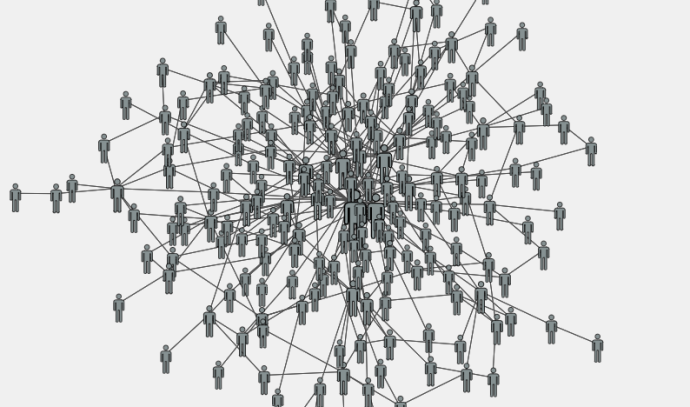Download the module’s lesson plan (pdf, editable format)
The topic of computational simulations of complex systems was chosen because, since the 50s, they have been an authentic part of the current methodological practices in research and professional endeavours. Indeed, nowadays, in almost all disciplines, computational methods in general – and simulations in particular – are intensively used to generate knowledge and advance inquiry. In particular, computational simulations were selected because they have an interdisciplinary nature at the intersection of traditional STEM disciplines (applied physics, mathematics, and computer science of simulations) but also connect science with humanities and societal studies.
The IDENTITIES approach for the design and implementation of the module is mainly evident in:
- the search for the connections between the physical modelling of the simulated systems, their mathematical formulation, and the computational implementation;
- the enhancement of the identity of physical modelling as a lens to describe societal phenomena, closing in this way the gap between the dichotomy of natural sciences vs social sciences;
- the emphasis on computational simulations as boundary objects i.e., artefacts that bridge different domains and trigger interdisciplinary collaboration and understanding.
Introduction to the IDENTITIES approach to interdisciplinarity
Some videos to learn the basics of the frameworks, terminology, and tools on which the different activities of the module are built!
 Becoming explorers
Becoming explorers
Aims: The first submodule aims at a preliminary exploration of the properties of physical complex systems (non-linearity, high sensitivity to initial conditions, circular causality, emergent properties) and their educational potential.
Activities: Two dialogical lectures are proposed to participants. In the first, the instructor presents examples of complex systems (double pendulum, arctic feedback, shivering and sweating in the human body, Rayleigh-Benard convection) to show how they embed properties that are significantly different from those of classical systems. The second lecture, instead, is focused on the research in science education about teaching and learning complexity. Specific attention is devoted to the types of explanations for emergent phenomena that novices elaborate. To make participants experience first-hand the issue, the instructor proposes them a group activity to explain the process of movement of sand dunes in the desert. After the teamwork and a collective discussion, the instructor analyses the explanation formulated by a prospective teacher engaging with the same problem.
Introduction to complex systems in physics (pdf, editable format)



Introduction to complex systems education (pdf, editable format)


Worksheet: Search for an explanation of the movement of sand dunes (pdf, editable format)


Analysis of the problem of sand dunes (pdf, editable format)


 Becoming students
Becoming students
Aims: The main goal of this submodule is to introduce the notion of computational simulation and then to make participants experience equation-, agent- and network-based modelling and simulations by addressing specific case studies.
Activities: The submodule comprises two main interactive lectures. In the first, several definitions of simulation are discussed and two main approaches are delimited: the equation-based approach (providing the example of Lotka-Volterra model) and the agent-based one (providing the example of Schelling model). In the second lecture, the participants are led to see in action the previously delimited distinction between equation- and agent-based approaches by analysing the epidemiological model of Susceptible-Infectious-Recovered by Kermack and McKendrick; in the final part of the lecture, to these two approaches is flanked a third approach provided by network-based models to address epidemiological modelling. During the second lecture, several group activities are proposed to the participants.
Simulations of complex systems: examples of equation-based and agent-based simulations (pdf, editable format)





Equation-based, agent-based and network-based epidemiological models and simulations (pdf, editable format)





Worksheet: Extending the SIR equation-based model (pdf, editable format)


Worksheet: Exploring SIR equation-based simulation (pdf, editable format)



Worksheet: Formulating SIR agent-based model (pdf, editable format)



Worksheet: Reading SIR agent-based simulation (pdf, editable format)


Worksheet: Designing an epidemiological network (pdf, editable format)


 Becoming analysts
Becoming analysts
Aims: The third submodule aims at making participants analyse from an epistemological and interdisciplinary perspective the difference between equation-, agent-, and network-based models.
Activities: Two teamwork activities are proposed to the participants to analyse the work carried out in the module so far. In the first one, the participants reflect on the comparison of the three types of models and simulations experienced; to do that, they are guided by a table with some questions (e.g. What kind of phenomena does the model allow us to deal with? What spatial and temporal structures are incorporated? What is the connection between the model and its computational implementation (in a simulation)? What allows us to visualise the simulation of models, in relation to the system to be studied?). In the second activity, the participants are asked to reflect on the boundary objects detectable in the module and the disciplines at stake. The module ends with a wrap-up that discusses the relationship between physics and the interdisciplinary field of complex systems, toward the advent of the new discipline of computational social science that overcomes the traditional dichotomy between natural and social.
Comparing equation-, agent-, and network-based models (pdf, editable format)


Worksheet: Table for models’ comparison (pdf, editable format)


Interdisciplinary analysis of the module: in search of disciplinary boundaries in simulations and complex systems (pdf, editable format)






Worksheet: Detection of boundaries and disciplinary identities (pdf, editable format)






Download the module’s lesson plan (pdf, editable format)

